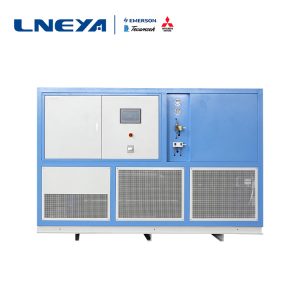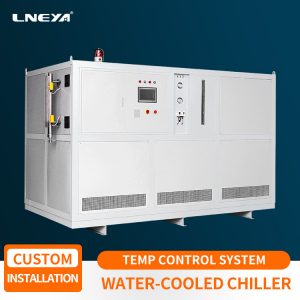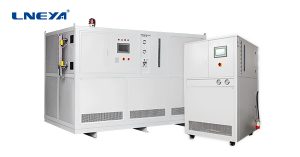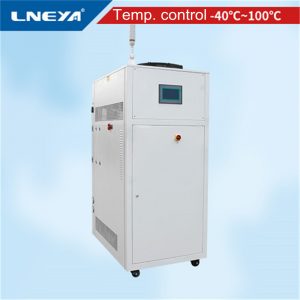How does the Industrial Water Chiller System Work?
When using industrial machinery, a cooling system may be required to prevent the machine from overheating. Refrigeration equipment can effectively keep materials in the optimal temperature range, but how does the chiller work? Understanding the working principle of industrial water chiller is very helpful to select the best refrigeration system to meet the needs of users.

Working principle of industrial water chiller
In short, industrial water chillers cool process fluids. Process fluid (usually water or water / glycol mixture) is used to cool machinery, equipment, etc. The process fluid absorbs heat from the cooled object and then passes through the chiller, where the heat is removed from the fluid and transferred to the ambient air.
Refrigeration circuit
The industrial water or glycol chiller system consists of two main circuits: refrigeration circuit and fluid circuit. The refrigeration circuit consists of four parts: compressor, condenser, expansion valve and evaporator. The refrigeration circuit removes heat from the process fluid. The fluid circuit usually consists of fluid reservoir, pump, filter and heat exchanger. The fluid circuit carries process fluid around the cooled object.
Refrigeration cycle steps:
Refrigeration circuit is the most technical part of the working mode of chiller. The refrigeration cycle uses the principle of thermodynamics to effectively transfer heat from one region to another. In the case of a chiller, heat is extracted from the cooled fluid and transferred to the ambient air.
Compressore
The refrigeration cycle starts with the compressor. The compressor uses gaseous low-pressure and low-temperature refrigerant to compress it into high-pressure and high-temperature gas.
Condensatore
The gas then flows through the coils in the condenser. In the condenser, air or water will flow through the coil and remove heat from the refrigerant. As the refrigerant loses heat, it will begin to condense until all the gases condense into a liquid.
Valvola di espansione
After leaving the condenser, the liquid passes through the expansion valve. The expansion valve limits the flow of refrigerant. When the high-pressure liquid passes through the expansion valve, it enters the evaporator.
Evaporatore
The evaporator is where the refrigerant begins to evaporate. When the refrigerant evaporates, it becomes very cold and absorbs a lot of heat. The process fluid will interact with the cold refrigerant in the evaporator. Heat is removed from the fluid and transferred to the refrigerant. The refrigerant then enters the compressor and the cycle begins again.
Raccomandazioni correlate
-
Effect of oil separator on ultra-low temperature refrigerator
1296In ultra-low temperature chillers, oil separators are an important accessory. In most cryogenic refrigerators, there are oil separators. What are the effects of oil separators on cryogenic refrigerators? Needless to say, the position of the cryoge...
Visualizza i dettagli -
Quali sono le ragioni del consumo di energia delle unità di refrigerazione di grandi dimensioni?
928Durante il funzionamento delle unità di refrigerazione di grandi dimensioni, la capacità di raffreddamento e le condizioni di lavoro sono i fattori principali del consumo di energia, ma per evitare un consumo di energia non necessario, è necessario capire bene. Quando la scala o...
Visualizza i dettagli -
LNEYA chip test temperature control system operation overview
1380With the development of technology, chip testing has a very high requirement for its accuracy under certain temperature requirements. So what is the understanding of the chip test system? Chip testing requires high temperature accuracy in low temp...
Visualizza i dettagli -
Trouble shooting method for water cut off of cooling system driven by wheel motor
988Long-term use of the wheel motor to drive the cooling system can encounter any kind of failure. For the wheel-side motor drive cooling system, if there is a water cut problem, it is very dangerous and must be dealt with in a timely and effective m...
Visualizza i dettagli
 Refrigeratori industriali LNEYA Produttore Fornitore
Refrigeratori industriali LNEYA Produttore Fornitore














